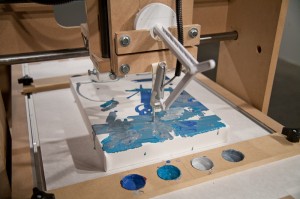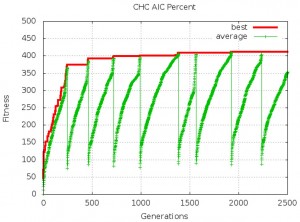I’m glad to announce a project created by Benjamin Grosser called “Interactive Robotic Painting Machine“. The machine uses Python and Pyevolve as it’s Genetic Algorithm core, the concept is very interesting:
What I’ve built to consider these questions is an interactive robotic painting machine that uses artificial intelligence to paint its own body of work and to make its own decisions. While doing so, it listens to its environment and considers what it hears as input into the painting process. In the absence of someone or something else making sound in its presence, the machine, like many artists, listens to itself. But when it does hear others, it changes what it does just as we subtly (or not so subtly) are influenced by what others tell us.
Read more about the project in the Benjamin Grosser website.


